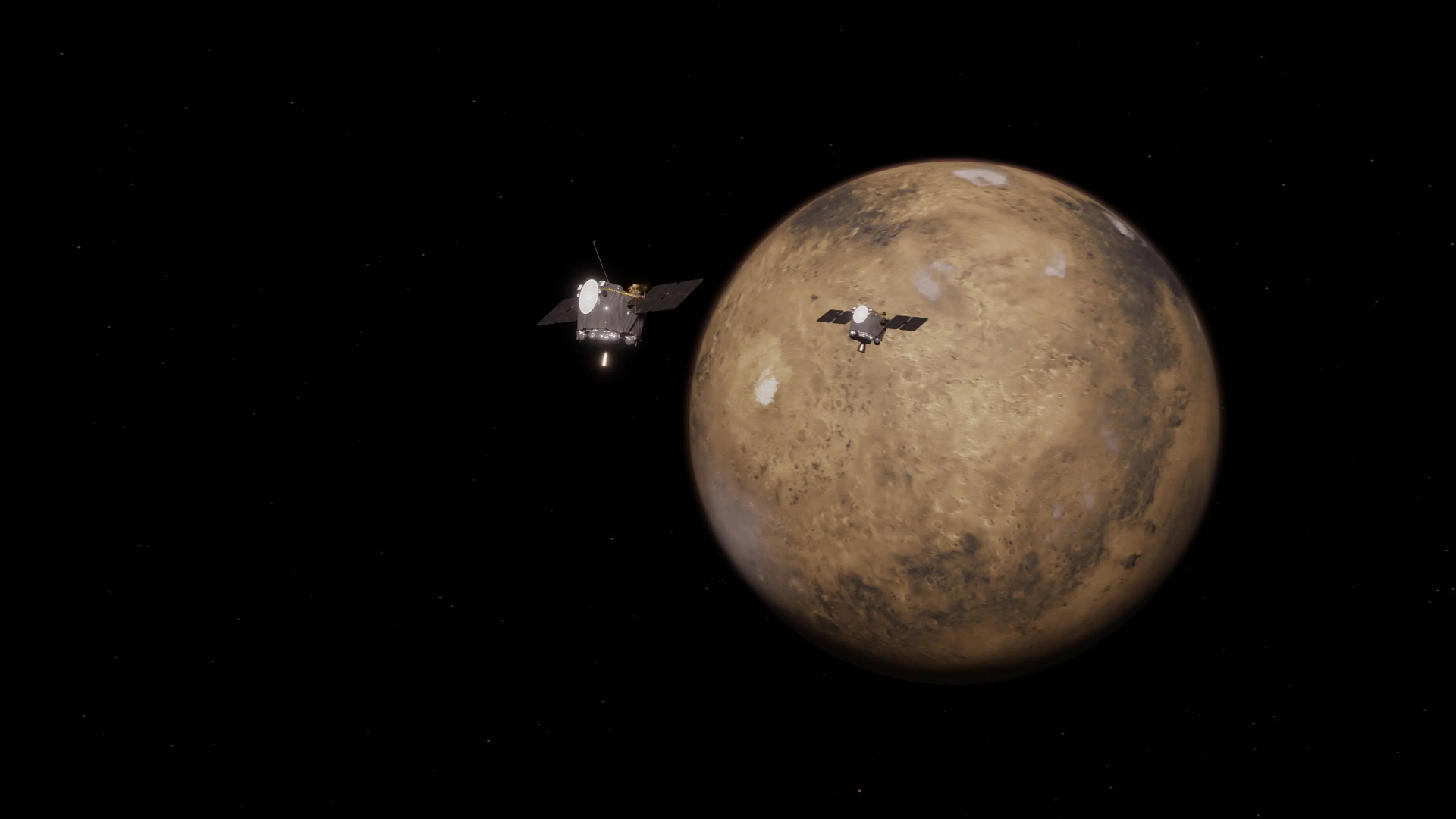Comet SWAN: A brilliant 'icy wanderer' in photos
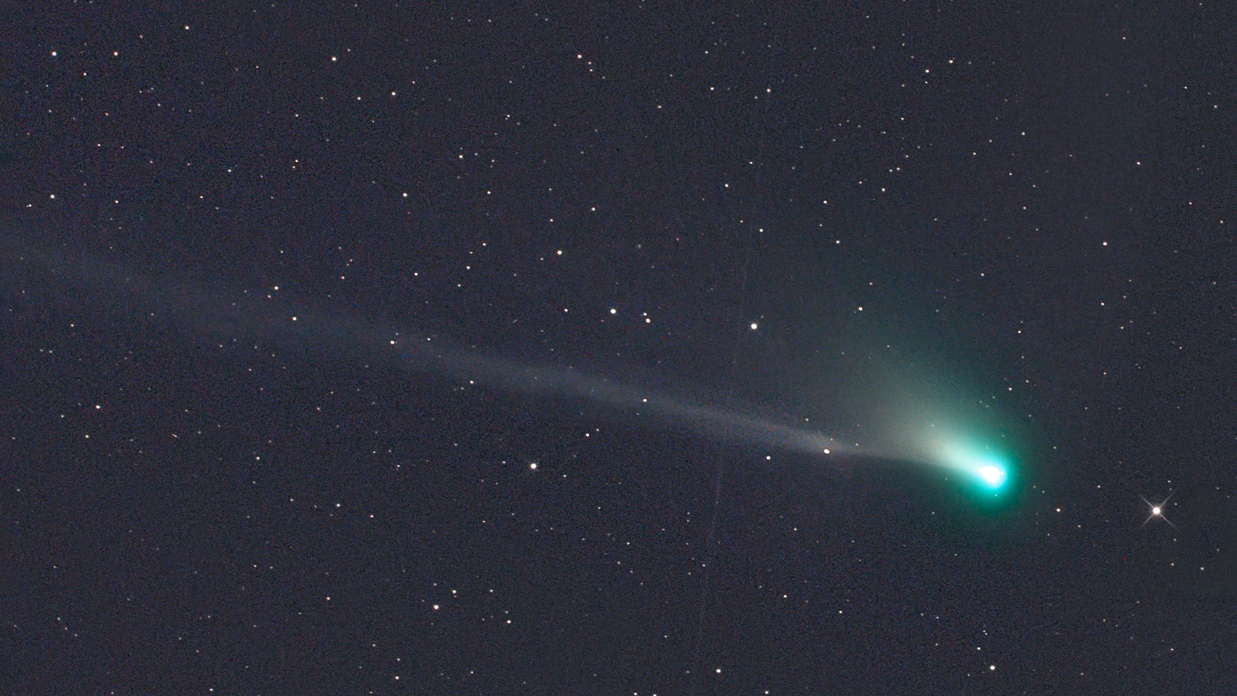
Meet Comet SWAN
Comet C/2020 F8 SWAN was discovered in early April 2020, when amateur astronomer Michael Mattiazzo spotted it in images captured by NASA's Solar and Heliospheric Observatory on March 25. It has since brightened just enough for skywatchers to spot it with the naked eye under dark, clear skies, though it is easier to see through binoculars or telescopes.
The comet is expected to reach perihelion on May 27, when it will swing around the sun and begin its journey back to the outskirts of the solar system. See photos of the bright, new comet in this Space.com gallery. In the image above, Comet SWAN shows off its long ion tail during its closest approach to Earth on May 12.
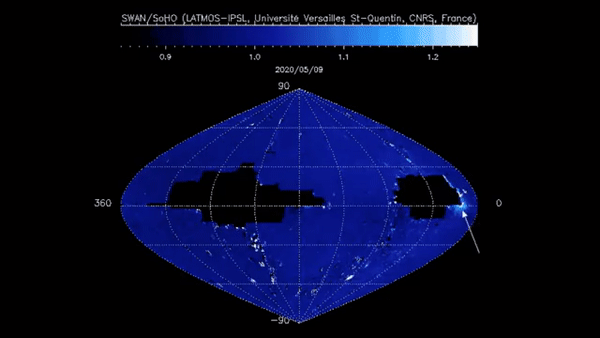
SOHO's view of Comet SWAN
This animated all-sky map shows the view that NASA's Solar and Heliospheric Observatory (SOHO) had of comet C/2020 F8 SWAN from March 25, 2020 to early May. These views were captured using SOHO's Solar Wind Anisotropies (SWAN) camera, after which the newfound comet was named. Comet SWAN appears to leave the left side of the image in mid-April and reappears on the right side around May 3.
SOHO's SWAN instrument can detect hydrogen in space, and because Comet SWAN is releasing huge amounts of water (about 1.3 metric tons, or 1.5 imperial tons per second), this outflow made the comet visible to SOHO's instruments, NASA officials said in a statement.
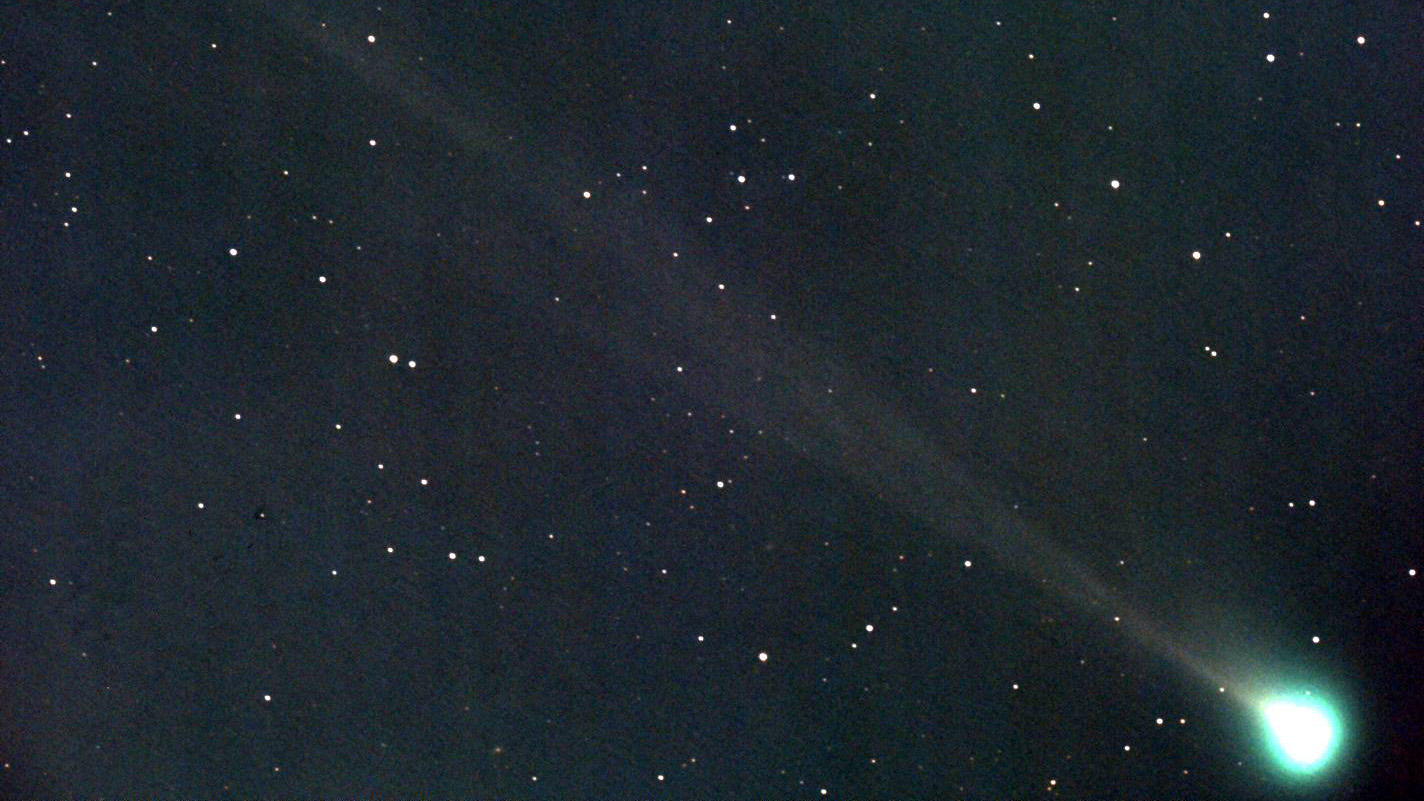
May 7
Amateur astronomer and Comet C/2020 F8 SWAN discoverer Michael Mattiazzo of Castlemaine, Australia, captured this image of the new comet on May 7, 2020.
Comet SWAN initially caught Mattiazzo's attention because it apparently was undergoing a sudden outburst of hydrogen gas — something that SOHO's SWAN instrument is particularly well adapted to picking up.
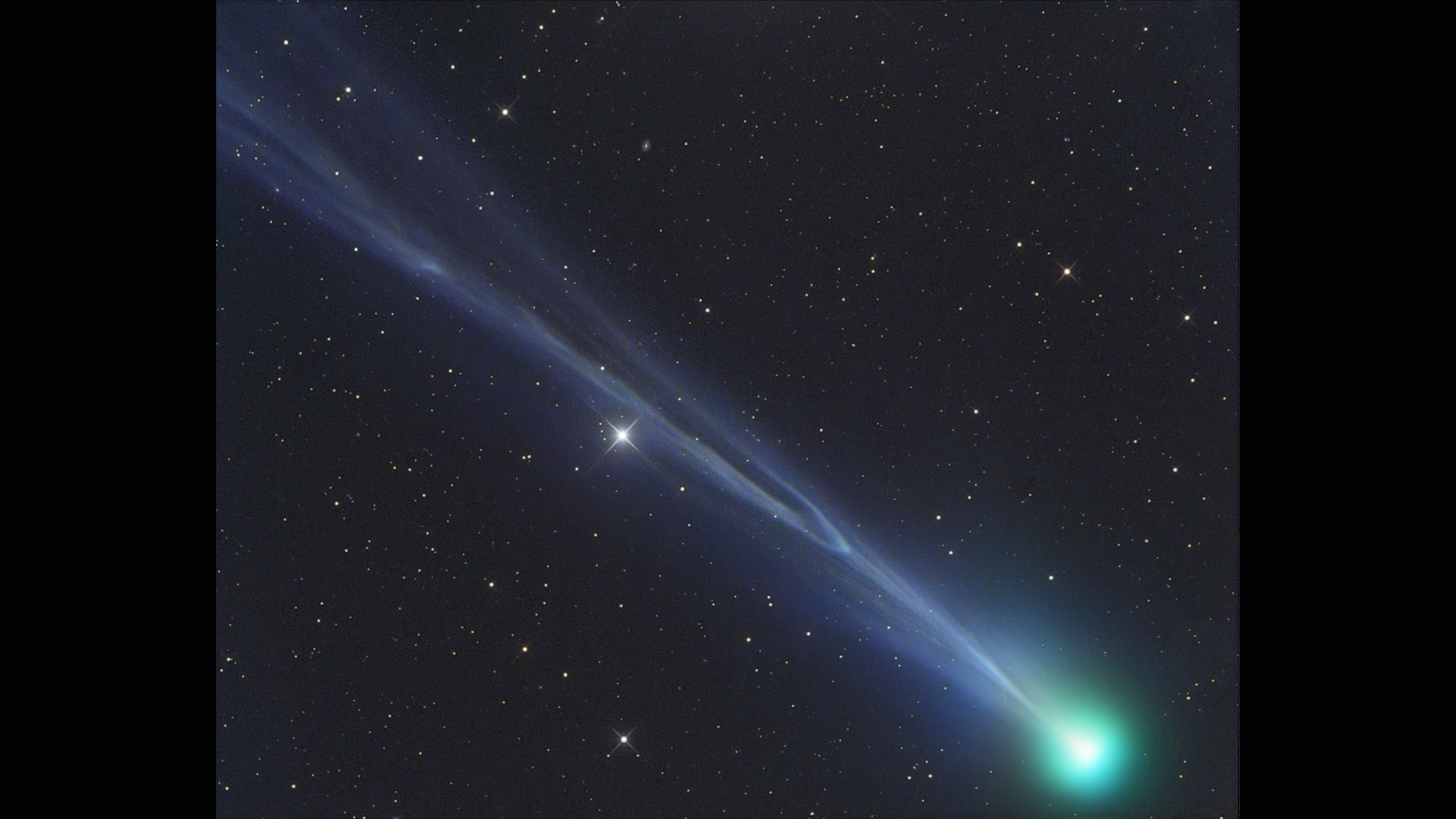
May 5
Astrophotographer Gerald Rhemann captured this image of comet C/2020 F8 SWAN on May 5, 2020, using an ASA 12-inch F3.6 Astrograph with a FLI Microline KAF-16200 camera.
The "dirty snowball" features a fuzzy, bright-green coma with a long and distinct ion tail. The ion tail consists of gas that is escaping the comet and being ionized by ultraviolet light from the sun. The gas is pushed outward by the solar wind.
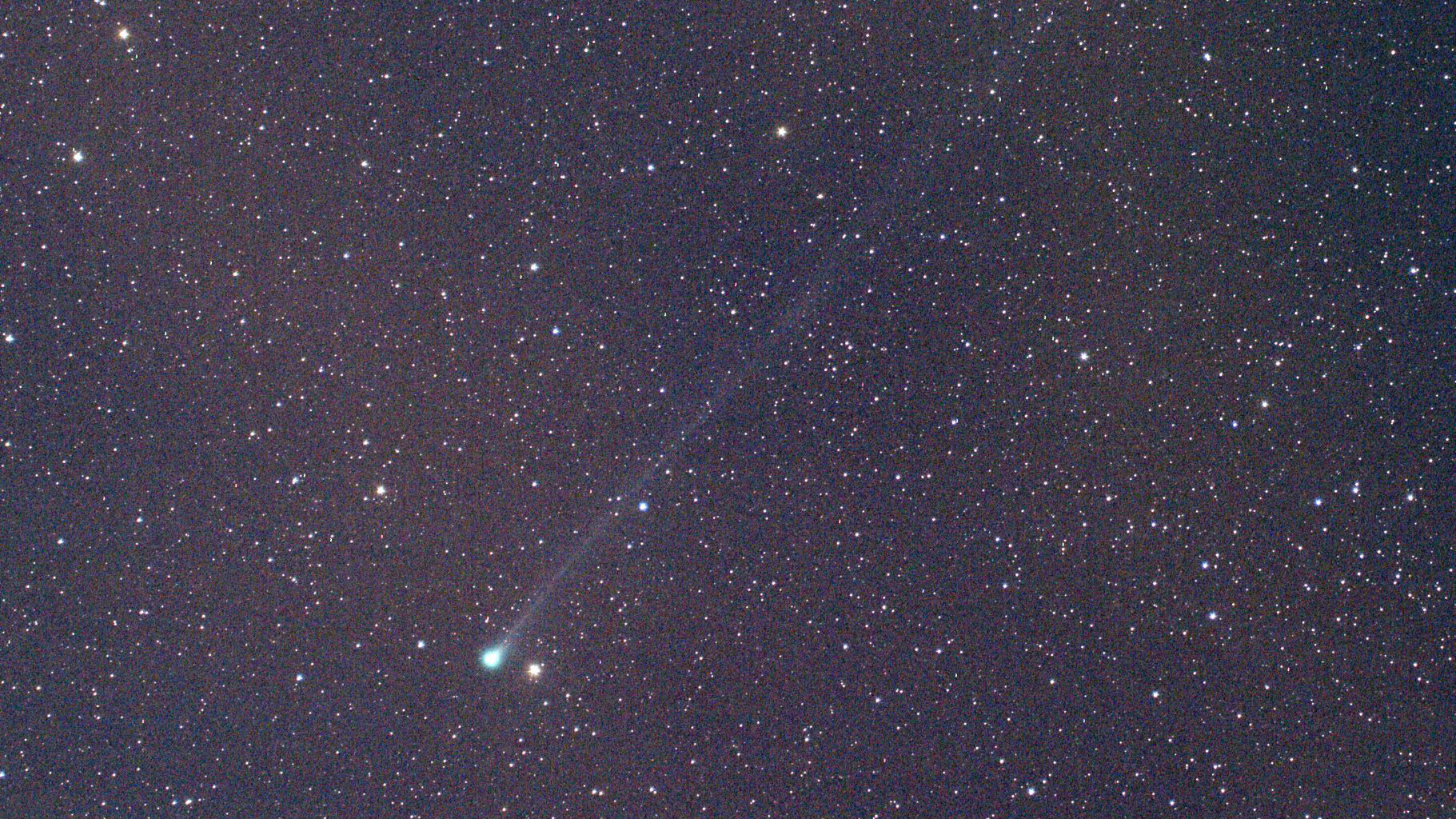
May 4
Michael Mattiazzo, the amateur astronomer who discovered Comet C/2020 F8 SWAN, captured this image of the comet on May 4, 2020.
The comet was 135 million miles (217 million kilometers) from the sun when Mattiazzo first saw it, but it will ultimately come to within 40.2 million miles (64.6 million km) of our star when it arrives at its perihelion, its closest point to the sun, on May 27.
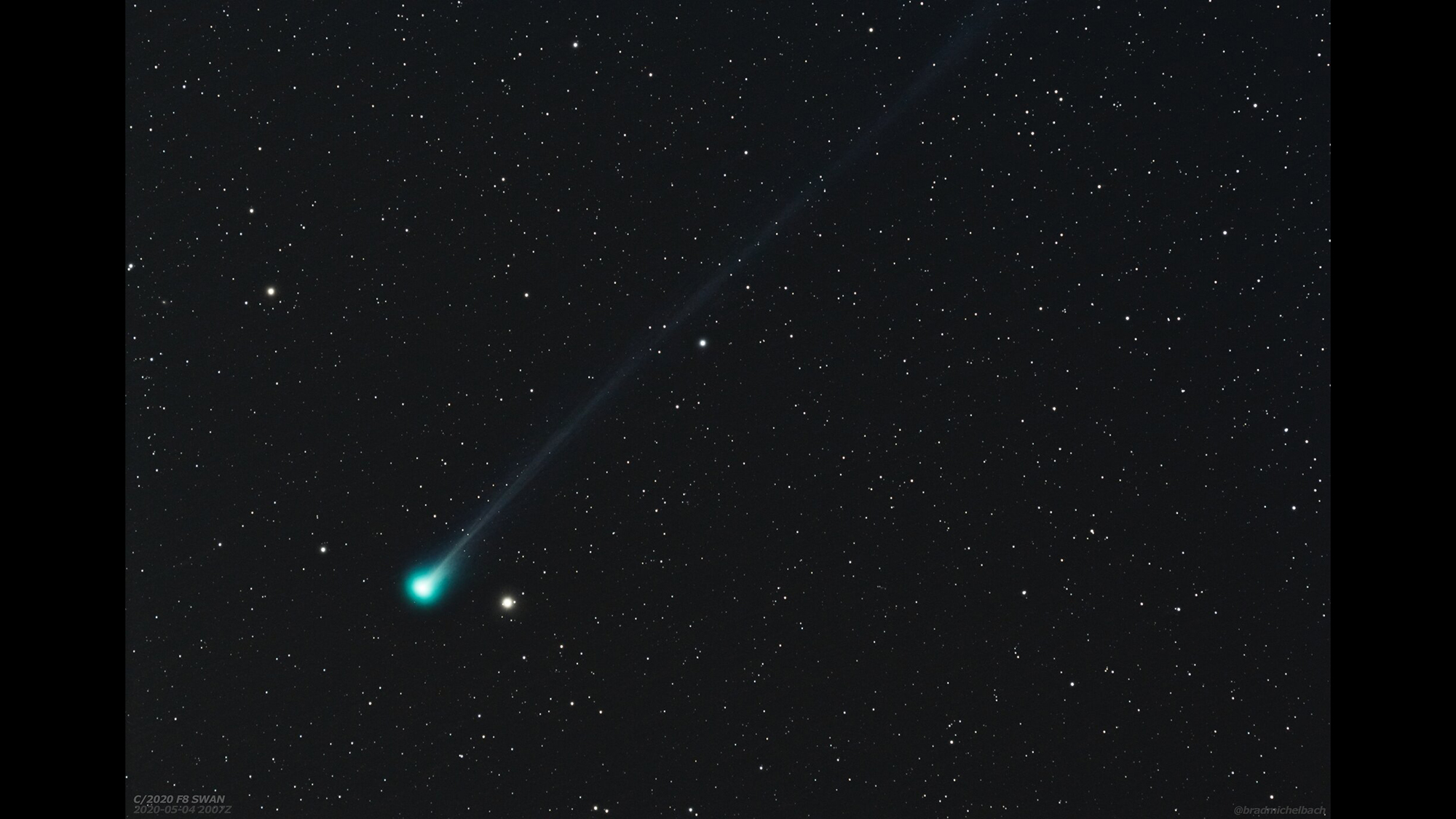
May 4
Bradley Michelbach captured this view of Comet C/2020 F8 SWAN on May 4, 2020, using a William Optics RedCat 51 APO f/4.9 refracting telescope, a Star Adventurer tracking mount and a Canon EOS 700D camera.
"Played video games until 3 a.m. waiting for this space iceberg to rise over the hill," Michelbach wrote in an image description. Camera set up earlier, now dripping from dew, I'm reminded by what this target is largely made up of ... ice!
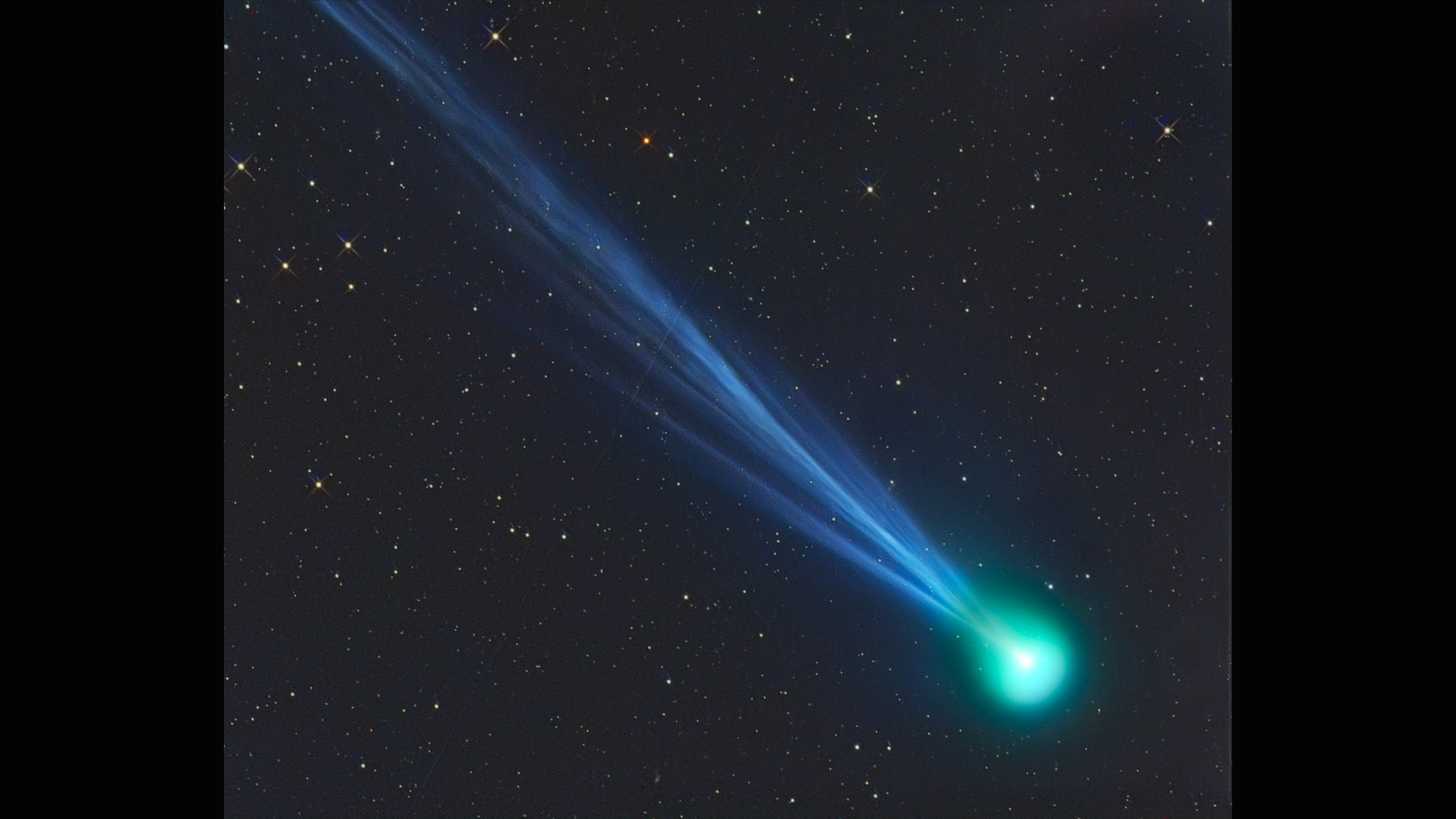
May 4
Astrophotographer Gerald Rhemann captured this image of comet C/2020 F8 SWAN on May 4, 2020.
Rhemann used an ASA 12-inch F3.6 astrograph with a FLI Microline KAF-16200 camera to capture the comet from Farm Tivoli in Namibia, at approximately 3:30 a.m. local time.
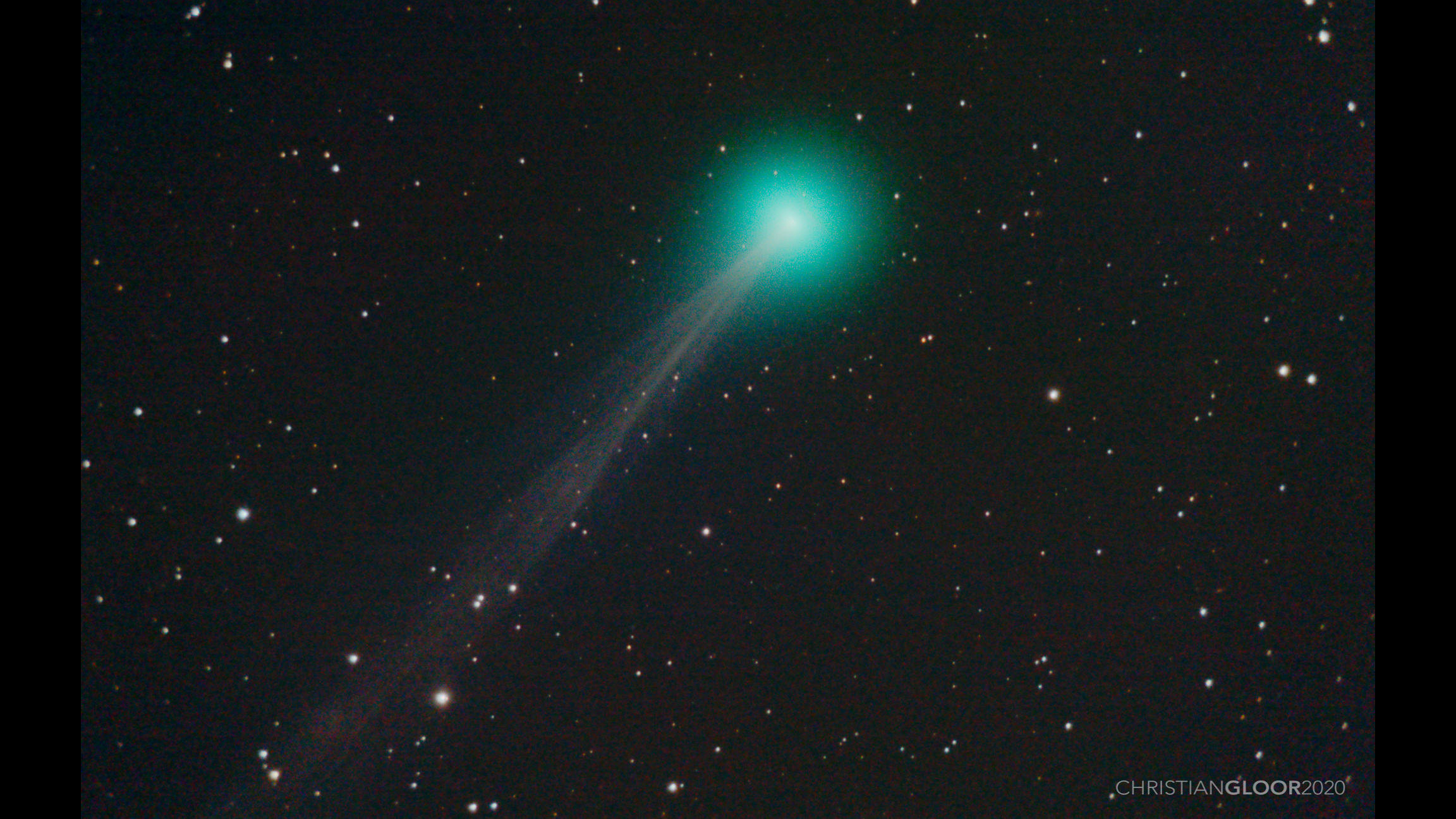
May 1
Photographer Christian Gloor captured this 5-minute exposure of Comet SWAN on May 1, 2020, using a Celestron 5SE telescope on an AVX mount with a ZWO ASI295MC Pro astrophotography camera.
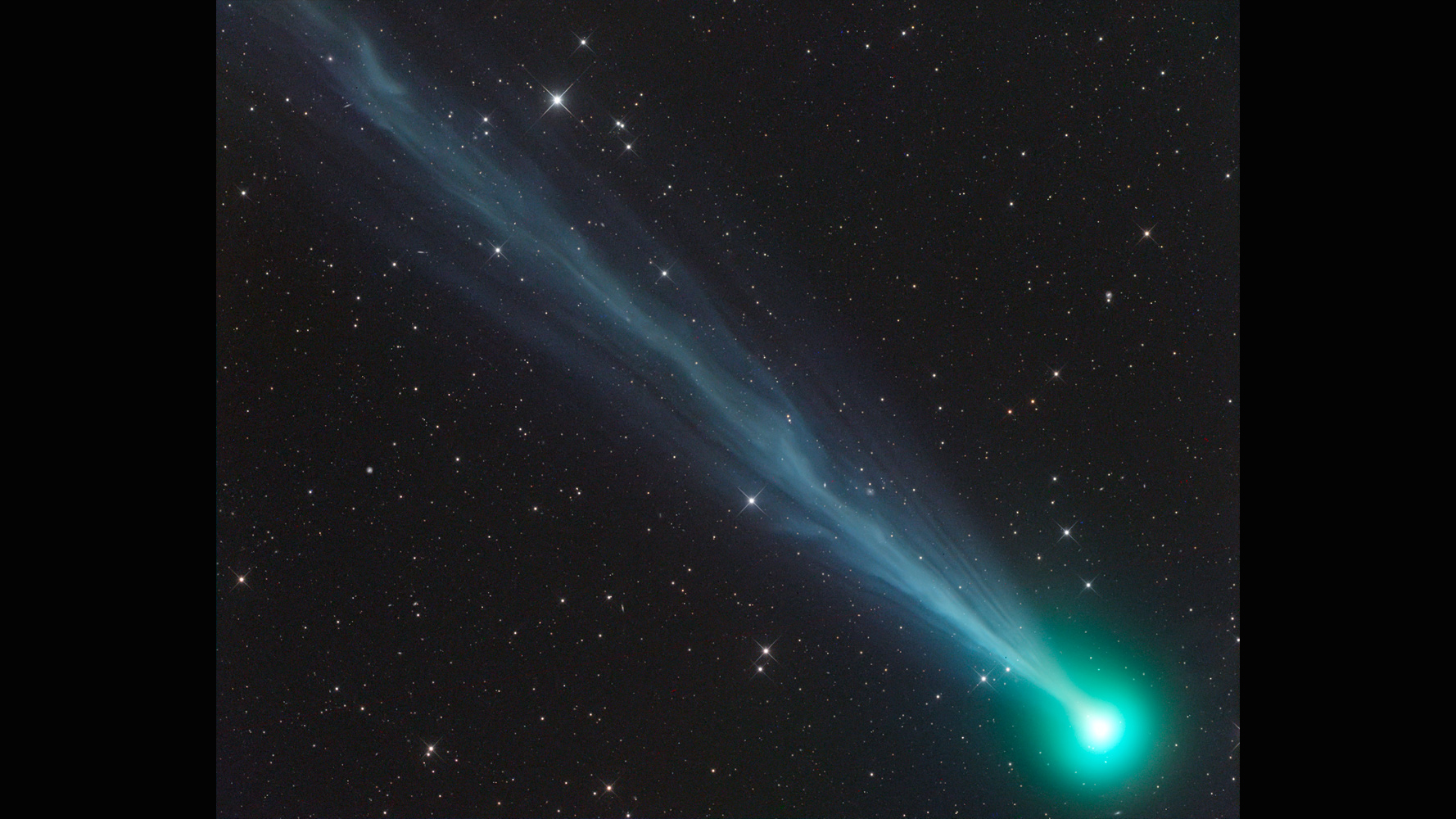
May 1
Gerald Rhemann captured this image of comet C/2020 F8 SWAN from Farm Tivoli in Namibia on May 1, 2020, at 3:10 a.m. local time. Rhemann used an ASA 12-inch F3.6 astrograph with a FLI Microline KAF-16200 camera to capture the comet.
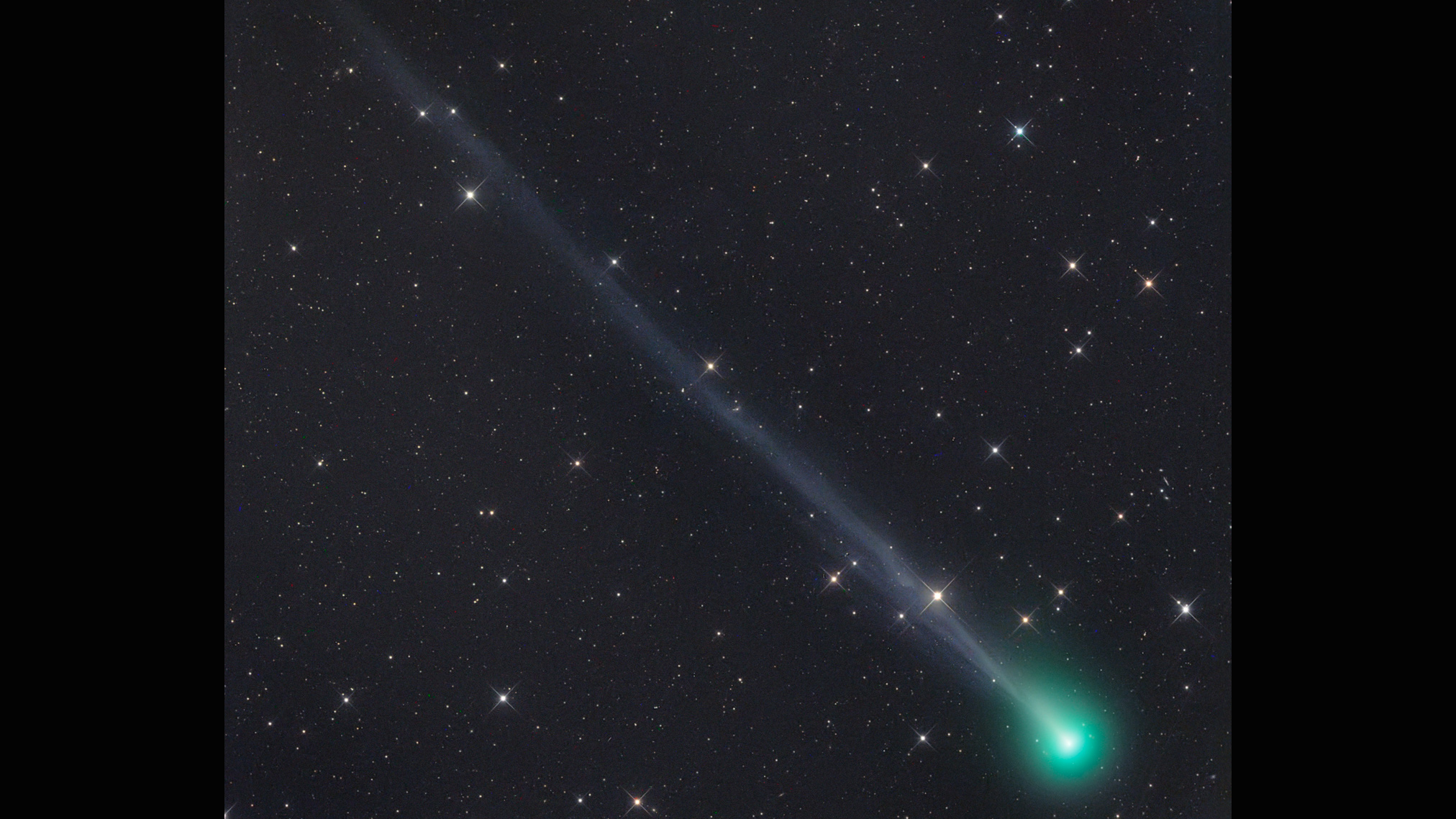
April 26
Another view of comet C/2020 F8 SWAN, captured by Gerald Rhemann on April 26, 2020. At the time, the comet was shining at magnitude +7.2, which is too faint to be seen with the naked eye but visible with binoculars or telescopes.
Less than a week later, the comet's brightness had surged more than six-fold, reaching magnitude +5.2. By that time, the comet was faintly visible in a dark sky with the unaided eye. But ever since then, the comet's brightening has stalled and even has appeared to dim a little.
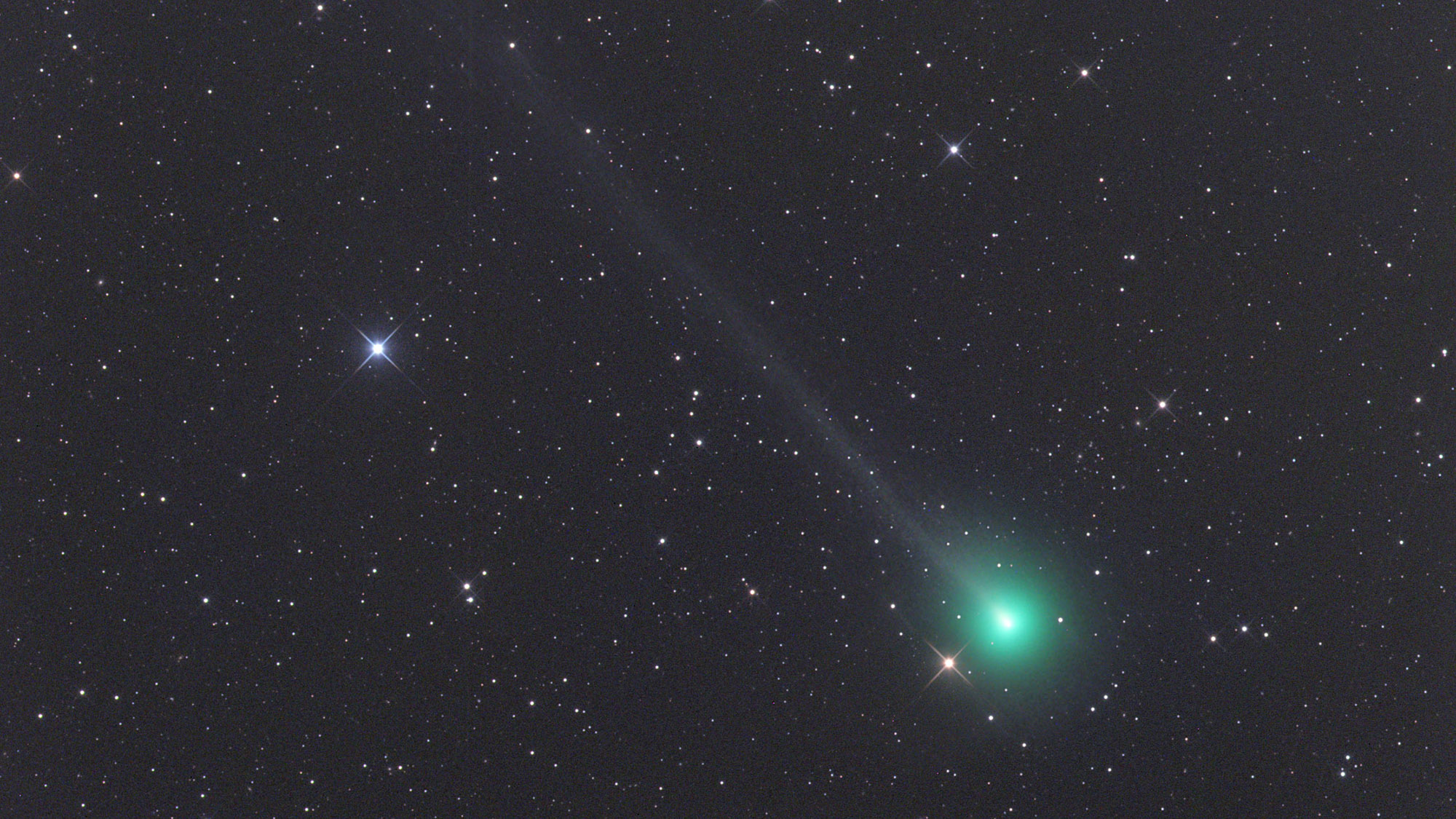
April 17
Astrophotographer Gerald Rhemann captured this image of comet C/2020 F8 SWAN on April 17, 2020, just before the comet experienced a surge in brightness.
Related: As Comet ATLAS crumbles away, Comet SWAN arrives to take its place for skywatchers
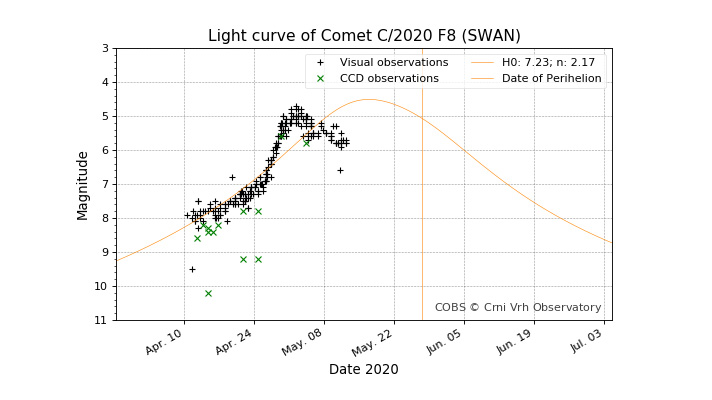
Comet SWAN's light curve
A light curve of Comet SWAN from the Comet Observation Database (COBS) clearly illustrates the rapid rise in the comet's brightness in early May, followed by a slight downturn.
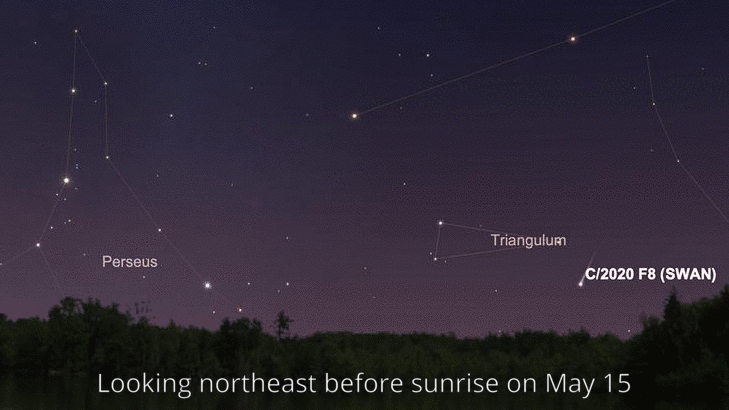
Where to see comet SWAN
From now through early June, Comet SWAN will track north and east from the constellation Triangulum, into Perseus and will enter Auriga on June 1. Up until May 24, your best chance of catching a view of the comet will be in the morning sky. Start looking about 60 to 70 minutes before sunrise; the comet should appear roughly 10 degrees above the northeast horizon.
This animation shows the position of Comet C/2020 F8 SWAN in the morning sky from May 15 to May 24, looking northeast about one hour before sunrise.
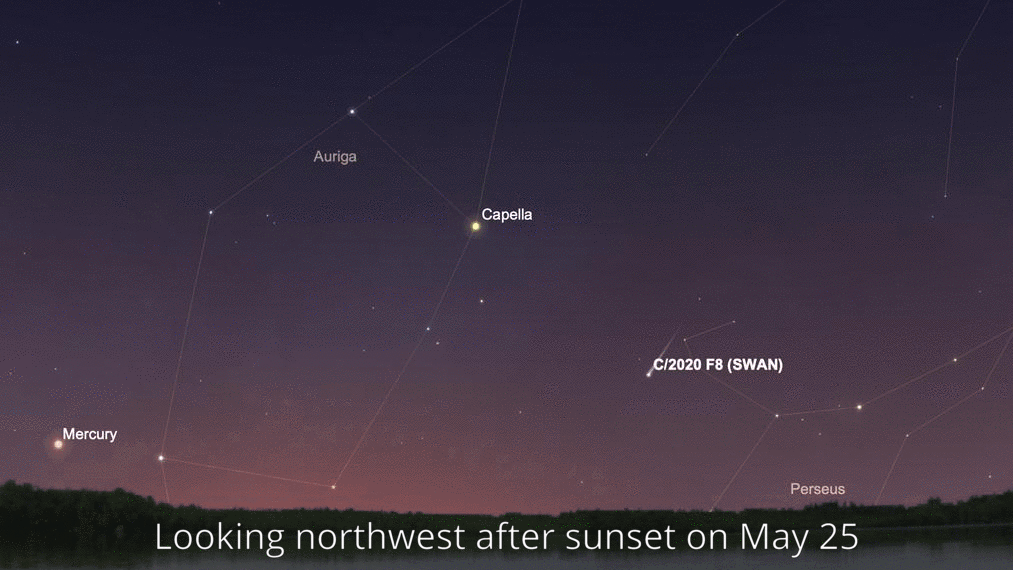
Where to see comet SWAN
After May 25, best chances of seeing the comet will transition to the evening sky. About 60 to 70 minutes after sunset, the comet will be positioned about 10 degrees above the north-northwest horizon, with any semblance of a tail pointing upward and to the left.
This animation shows the position of Comet C/2020 F8 SWAN in the evening sky from May 25 to May 31, looking northwest about one hour after sunset.
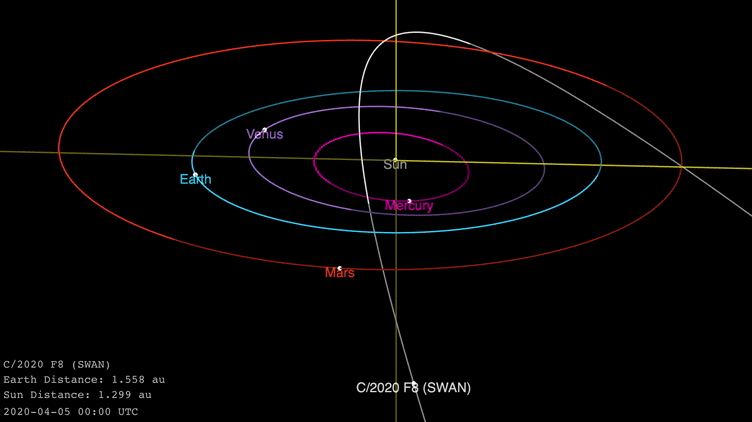
Comet SWAN orbit diagram
This 3D orbit animation shows the path that Comet C/2020 F8 (SWAN) will take around the sun between April 2020 and March 2021. Comet SWAN is expected to reach perihelion, its closest point to the sun, around May 27, 2020 — two weeks after its closest approach to Earth on May 12. The comet's steep orbit is inclined 111 degrees relative to the ecliptic plane.
Editor's note: If you have an amazing photo of Comet SWAN that you'd like to share for a possible story or image gallery, you can send images and comments to spacephotos@space.com.
- As Comet ATLAS crumbles away, Comet SWAN arrives to take its place for skywatchers
- Photos: Spectacular comet views from Earth and space
- The 9 most brilliant comets ever seen
Email Hanneke Weitering at hweitering@space.com or follow her @hannekescience. Follow us on Twitter @Spacedotcom and on Facebook.
OFFER: Save 45% on 'All About Space' 'How it Works' and 'All About History'!
For a limited time, you can take out a digital subscription to any of our best-selling science magazines for just $2.38 per month, or 45% off the standard price for the first three months.
Breaking space news, the latest updates on rocket launches, skywatching events and more!

Space.com is the premier source of space exploration, innovation and astronomy news, chronicling (and celebrating) humanity's ongoing expansion across the final frontier. Originally founded in 1999, Space.com is, and always has been, the passion of writers and editors who are space fans and also trained journalists. Our current news team consists of Editor-in-Chief Tariq Malik; Editor Hanneke Weitering, Senior Space Writer Mike Wall; Senior Writer Meghan Bartels; Senior Writer Chelsea Gohd, Senior Writer Tereza Pultarova and Staff Writer Alexander Cox, focusing on e-commerce. Senior Producer Steve Spaleta oversees our space videos, with Diana Whitcroft as our Social Media Editor.

